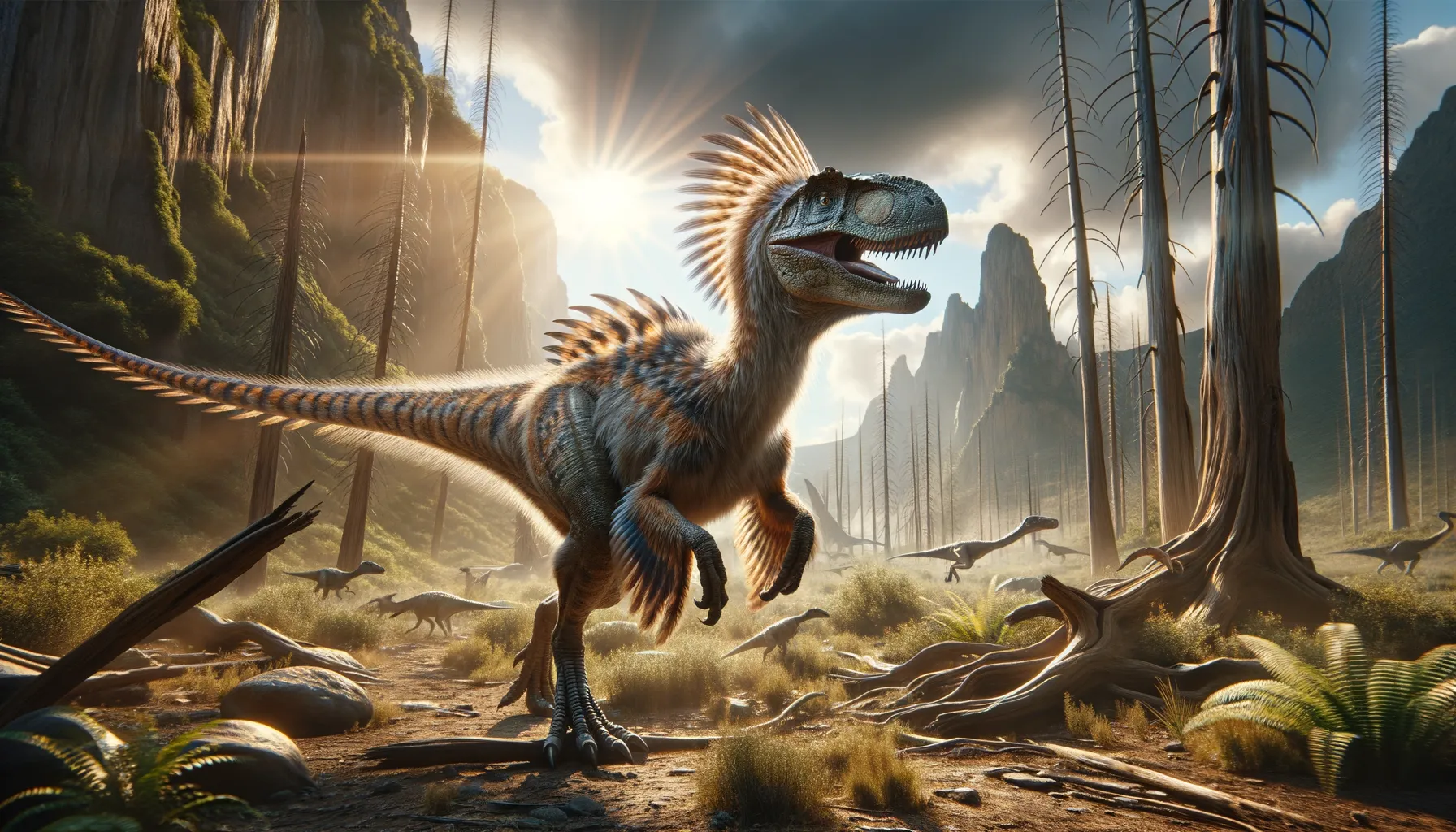
Yurgovuchia
Swift hunter of the Cretaceous wilds.
Period
Cretaceous
Length
Around 2 meters in length.
Height
Approximately 1 meter tall.
Weight
Estimated to be around 27 to 45 kg.
Yurgovuchia is a dromaeosaurid theropod dinosaur that lived during the Early Cretaceous period. Known for its adaptability and moderate speed, it shared its habitat with various other dinosaur species. This dinosaur had a feathered body and was closely related to the likes of Velociraptor. Its fossils have provided valuable insights into the evolution and spread of dromaeosaurids in North America.
Diet
Yurgovuchia was a carnivore, preying on smaller animals which it could capture and overpower. Its teeth and claws were well-suited for tearing flesh, suggesting it was an effective hunter of its time.
Hunting
Yurgovuchia likely relied on ambush hunting techniques, using its speed and agility to surprise its prey. It may have worked in coordination with others to capture and take down larger prey than it could alone.
Environmental challenges
Surviving in a period with fluctuating climates and changing vegetation, Yurgovuchia faced competition from other predators. It had to adapt its hunting and scavenging techniques to ensure continued survival. Natural disasters like floods might have periodically affected their habitats, posing further challenges.
Speed
Moderate when compared to other dinosaurs.
Lifespan
Could live for several decades if conditions allowed.
First discovery
Found in the Cedar Mountain Formation in Utah, USA.
Fun Facts
- Yurgovuchia is a dinosaur that lived about 130 million years ago during the Early Cretaceous period.
- This dinosaur was a member of the dromaeosaurid family, known for their sickle-shaped claws and keen hunting skills.
- Yurgovuchia fossils have been found in what is now Utah, USA, providing clues about its habitat and lifestyle.
- Unlike some of its famous cousins like Velociraptor, Yurgovuchia was smaller, likely measuring around three feet tall.
- Its name 'Yurgovuchia' means 'coyote', inspired by a Ute word since its remains were discovered in a region significant to the Ute people.
- Yurgovuchia is known for its distinctive tail, which helped balance it during high-speed chases or agile movements.
- This dinosaur had feathers, which might have been used for display, warmth, or aiding in movement, similar to modern birds.
Growth and Development
Yurgovuchia hatchlings were probably small and vulnerable, requiring growth periods to reach mature sizes. As it developed, it would have experienced several physical changes, such as the development of stronger jaws and larger claws. Social behavior and interactions were important for learning hunting techniques.
Habitat
The environment it lived in was diverse, ranging from forests to open plains, providing a variety of prey and cover. Such habitats allowed it to exploit different ecological niches and avoid larger predators. These areas also offered plenty of nesting sites, crucial for species reproduction.
Interaction with other species
Yurgovuchia likely coexisted with various herbivorous dinosaurs, occasional rivals for resources. It might have also scavenged kills from larger carnivores when opportunities arose. Interactions with other carnivorous species could have included both competition and opportunistic collaboration.
Natural lifespan
In optimal conditions, it could have lived up to three decades.
Reproduction
Egg-laying was the reproductive strategy, with nests possibly constructed in safe, concealed locations. Parental investment in guarding the nest and caring for the young was likely quite significant, to ensure survival in a dangerous environment.
Social behaviour
Social groups might have existed, with individuals cooperating for hunting larger prey. Communication within these groups could have involved vocalizations and visual displays. Young Yurgovuchia were likely integrated early into these social structures to learn survival skills.
Fossil locations
Fossils have been primarily discovered in Utah, indicating its presence during the Early Cretaceous in North America. The Cedar Mountain Formation, where it was found, is rich in other dinosaur fossils as well, offering a window into the diverse ecosystem of that time.
